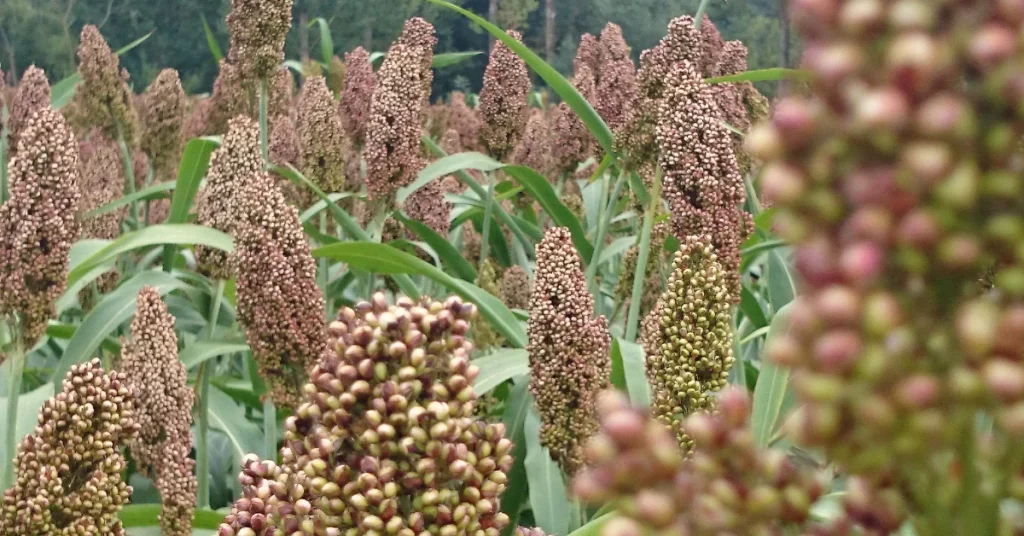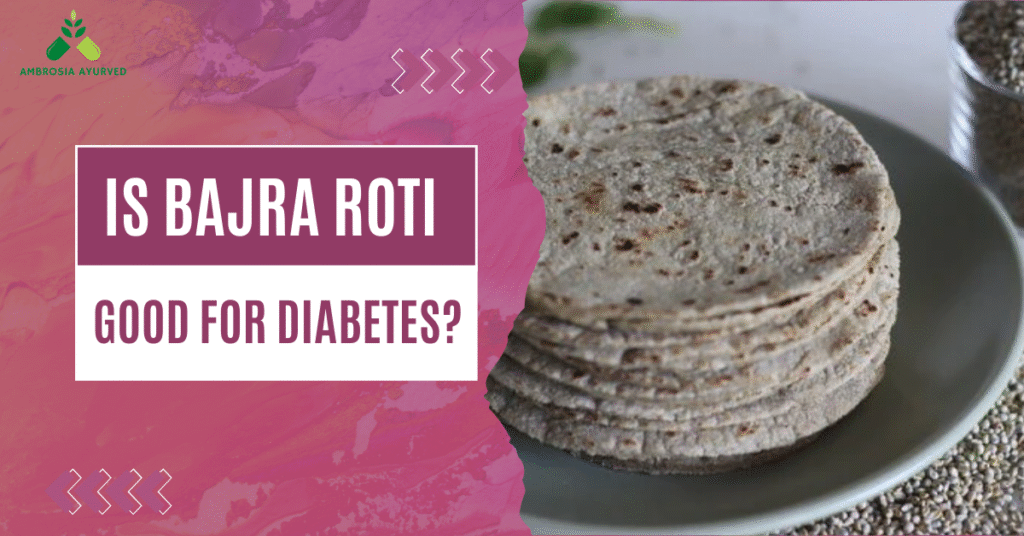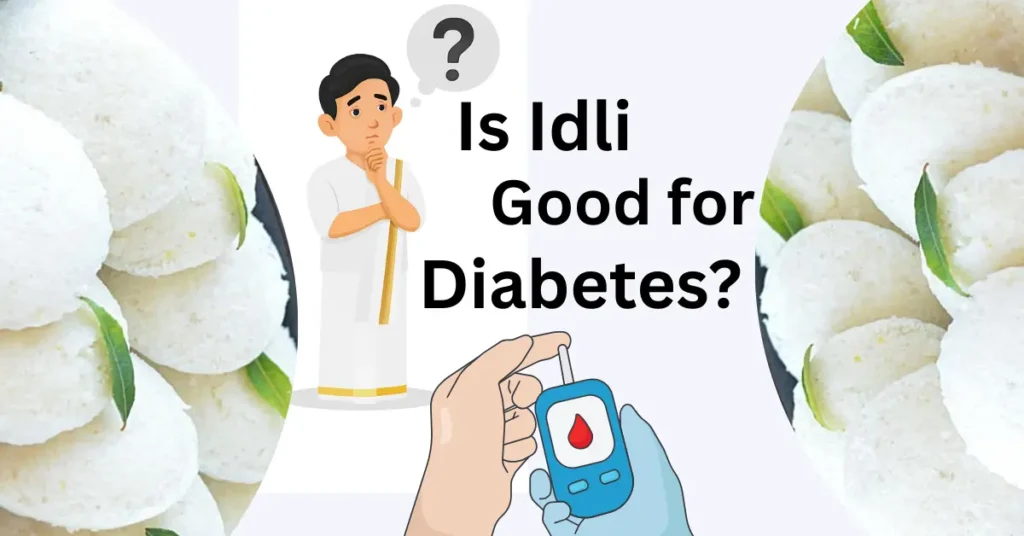Is bajra roti good for diabetes? If you’re living with diabetes or supporting someone who is, this question might have crossed your mind. When it comes to managing blood sugar levels, what you eat matters just as much as when and how much you eat.
In recent years, there’s been a growing interest in traditional grains like bajra, also known as pearl millet, especially as people move away from processed flours and high-GI foods. Bajra roti has been a staple in Indian kitchens for generations, but now it’s being looked at through a new lens: Can it help with diabetes?
Table of Contents
What is Bajra (Pearl Millet)?
Bajra, also known as pearl millet, is one of the oldest grains cultivated by humans, and it’s been a part of Indian diets for centuries. Grown mostly in dry regions, bajra is naturally gluten-free and packed with nutrients, which makes it a strong contender for healthy eating.
It’s mostly consumed in the form of bajra roti — a dense, earthy-flavored flatbread that’s especially popular during winters. Traditionally, it’s known to keep the body warm and energized. But beyond tradition, bajra holds serious nutritional value that’s now gaining attention in modern diets, especially for people with diabetes.

Common Ways Bajra is Consumed:
- Bajra roti (flatbread)
- Bajra khichdi (millet porridge with lentils/vegetables)
- Bajra upma or dosa (as part of millet-based meals)
- Bajra flour is used in multigrain blends
This humble grain is no longer just “village food.” With its dense fiber content, essential minerals, and slow-releasing carbs, it’s becoming a modern superfood, especially in diabetic-friendly diets.
Nutritional Value of Bajra Roti (Per 100g)
Understanding the nutritional profile of bajra roti helps us see why it’s often recommended for diabetes management. Here’s a quick snapshot of what you get in about 100 grams of bajra roti:
- Calories: ~120-130 kcal
- Carbohydrates: 22-25 grams (complex carbs)
- Dietary Fiber: 2.5-3 grams (helps slow sugar absorption)
- Protein: 4-5 grams (good plant-based source)
- Fat: 1-2 grams (mostly healthy fats)
- Iron: 4-5 mg (important for energy)
- Magnesium: 100 mg approx (helps insulin sensitivity)
- Calcium: 15-20 mg
- Gluten-free: Yes
Why These Nutrients Matter for Diabetes
- Low Glycemic Index (GI): Bajra’s carbs break down slowly, preventing sudden blood sugar spikes.
- High Fiber: Fiber delays glucose absorption, improving blood sugar control and keeping you fuller longer.
- Magnesium: Plays a crucial role in improving insulin sensitivity, which is key for managing type 2 diabetes.
- Gluten-Free: For people who have gluten sensitivity or prefer gluten-free diets, bajra is a safe option.
How Bajra Roti Helps in Diabetes Management
1. Slows Down Sugar Absorption
Thanks to its high fiber content, bajra slows the digestion and absorption of carbohydrates. This means glucose enters your bloodstream gradually, avoiding sudden sugar spikes that can be harmful for diabetics.
2. Provides Stable Energy Release
The complex carbs in bajra break down slowly, giving your body a steady source of energy. This steady energy release helps keep your blood sugar levels balanced throughout the day.
3. Boosts Insulin Sensitivity with Magnesium
Magnesium in bajra plays a key role in how your body uses insulin. Studies have shown that sufficient magnesium intake can improve insulin sensitivity, making your body better at regulating blood sugar.
4. Gluten-Free and Gut-Friendly
Since bajra is gluten-free, it’s easier on the gut for people with gluten sensitivities or celiac disease. A healthy gut can improve overall metabolism and blood sugar control.
5. Rich in Antioxidants
Bajra contains important antioxidants that help reduce inflammation, a common issue in people with diabetes. Lower inflammation supports better blood sugar control and overall health.
In simple words, bajra roti helps keep your blood sugar steady, supports your body’s insulin response, and contributes to overall better metabolic health.
Bajra Roti vs Wheat Roti: Which is Better for Diabetics?
When managing diabetes, choosing the right kind of roti can make a big difference. Bajra roti and wheat roti are two popular options, but how do they compare?
| Nutrient/Feature | Bajra Roti (per 100g) | Wheat Roti (per 100g) |
|---|---|---|
| Calories | 120-130 kcal | 130-140 kcal |
| Carbohydrates | 22-25 g (complex carbs) | 25-27 g |
| Dietary Fiber | 2.5-3 g | 1.5-2 g |
| Glycemic Index (GI) | 55-60 (low-medium) | 65-70 (medium) |
| Protein | 4-5 g | 3-4 g |
| Magnesium | ~100 mg | ~70 mg |
| Gluten | No | Yes |
Why Bajra is a Better Choice for Diabetics
- Lower Glycemic Index: Bajra has a lower GI, meaning it causes a slower and more controlled rise in blood sugar.
- Higher Fiber Content: More fiber means better blood sugar control and improved digestion.
- Better Mineral Content: Bajra provides more magnesium, which helps improve insulin sensitivity.
- Gluten-Free: Bajra is suitable for people with gluten intolerance or sensitivity, which can sometimes complicate diabetes management.
Best Ways to Include Bajra Roti in a Diabetic Diet
1. Ideal Meal Timing
Bajra roti works well for lunch or dinner. Its slow-digesting carbs keep you full longer and help maintain steady blood sugar levels during your active hours.
2. Pair it Smartly
Combine bajra roti with:
- Protein-rich dals or lentils (like moong, masoor) to balance carbs and promote fullness.
- Non-starchy vegetables (spinach, cauliflower, bottle gourd) for added fiber and nutrients.
- Curd or yogurt for probiotics and calcium.
Avoid pairing it with heavy, oily curries or too many fried sides to keep the meal diabetes-friendly.
3. Portion Control
Eating 1-2 medium-sized bajra rotis per meal is usually enough. Overeating any carb, even bajra, can affect blood sugar. Always listen to your body and adjust portions based on your blood sugar response.
4. Who Should Be Cautious?
While bajra is great for most diabetics, those with kidney problems or high potassium levels should consult their doctor first, since bajra contains potassium.
FAQ
Can diabetics eat bajra roti every day?
Yes, bajra roti can be eaten daily in moderation. Its high fiber and low glycemic index make it a good choice for blood sugar control. Just watch your portion sizes.
Is bajra roti better than wheat roti for diabetes?
Generally, yes. Bajra has more fiber, a lower glycemic index, and more magnesium, which helps insulin sensitivity. However, whole wheat roti is also healthy if consumed mindfully.
Are there any side effects of eating bajra for diabetics?
Bajra is safe for most people, but those with kidney issues or high potassium should consult a doctor because bajra contains potassium.
How should bajra roti be prepared for diabetics?
Use minimal oil, avoid deep-frying, and pair with protein-rich dals and vegetables for balanced meals.
Conclusion
Bajra roti is more than just a traditional Indian bread — it’s a nutritious, diabetes-friendly food packed with fiber, minerals, and slow-releasing carbs that help keep blood sugar steady. Including bajra roti in your diet, paired with balanced meals, can make managing diabetes easier and tastier.
Remember, managing diabetes is a journey. Along with good food choices like bajra, consistent lifestyle changes, and expert guidance are key to better health.
Take the Next Step
Ready to make a positive change? Start by adding bajra roti to your meals and monitor how your body responds. For a more powerful diabetes solution, check out trusted Ayurvedic supplements like A5 by Ambrosia Ayurved, specially formulated with 25+ herbs to help reverse diabetes naturally within 3 months.
Stay healthy, stay informed!




